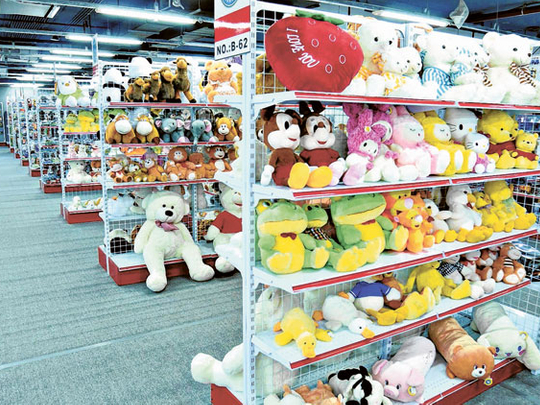
Dubai: Chinese-made merchandise has become commonplace in in the UAE. But there is still one area where the ‘Made in China' stamp is yet to come into play in a big way — toys.
This might sound surprising given that Chinese-made toys are estimated to account for 70 per cent of the toys imported into the region. But it also mirrors the gaps in consumer perceptions about Chinese-made toys.
Consumer reluctance has been triggered by doubts over the quality of these products, and the fact that Chinese toymakers never had the marketing muscle to connect with consumers… and their kids.
Until now, that is. A group of small- and mid-sized Chinese toymakers is using a base in Dubai to reach out to the Gulf markets. This way, they intend to craft their own ‘toy story'.
"After setting up the Chenghai toys centre — at the Entrepreneur Business Village — in Dubai, we have more understanding of the market and local culture, better communication with customers, and sometimes we discuss with customers to develop a new product," said Ji Huilin, general manager of BS International, the toys trading arm of China's Shantou Chenghai government.
Advertisement
"This base serves as an advertisement, business and service centre for ‘Chenghai Toys'. Even the smallest toymaker in China can get the market information, approach buyers and promote their products through this platform.
"Otherwise, it's almost impossible for small- or mid-sized toymakers to sell in this region.
"Chinese toymakers, especially the big names, have always tried to reach out to the world market. However, ours is one of the largest projects supported by government."
In fact, local authorities in China have been providing financial support to the companies represented at the base here. Currently, there are 110 toymakers represented and some of them have won supply contracts for distributors in the GCC, Lebanon and even further afield in India, Pakistan and Azerbaijan. More Chinese entities are expected to sign up for representation here as soon as they finalise a Middle East bound strategy for their merchandise.
New products are updated on a weekly basis and feature prices on par with what is available in China. The Dubai base would also have a key role in doubling the size of China's share in the region's toy market to Dh33.03 billion in the five years leading up to 2015.
"As Chenghai has become the hub of the toy industry in the world, a visit to our centre in Dubai is equal to a trip to China," said Ji. "This way we want to provide benefits to both buyers and toymakers and reduce the cost for all parties.
"Also, we can recommend a product according to the target customer or different sales channels."
Market size: Asia takes second spot
In 2010, Asia emerged as the second largest toy market after North America. Europe slipped into third position that year, during which the overall global toy market was valued at $83.3 billion. The value of Chinese toy exports totalled $10.08 billion.











